Seichoji And Tanjoji, Two Beautiful Temples Related To Nichiren

Nichiren, founder of one of the most popular Japanese Buddhist sects, was born in the southern Boso Peninsula (current Chiba prefecture) and was ordained as a priest at Seichoji. Tanjoji Temple built near his birthplace commemorates Nichiren's life.
Seichoji Temple, also commonly called "Kiyosumidera", is located in a rural area about 12 kilometers from Kamogawa City, Chiba Prefecture, at the foot of Mt. Kiyosumi (337 meters) within the Minami Boso Quasi-National Park.
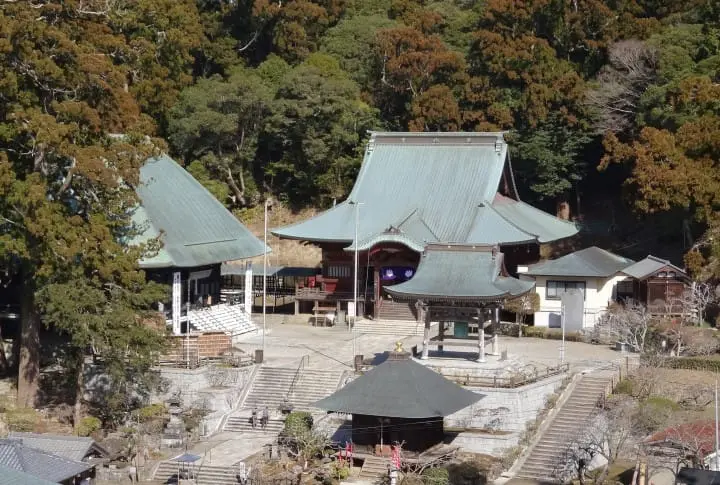
Seichoji Temple
While the temple is notable both for historical and cultural reasons, it is especially known for its impact on the course of Buddhism in Japan and the world. The characters "清澄" from the name of the temple mean "serenity" or "calm" and amply describe the temple precinct and surrounding area.
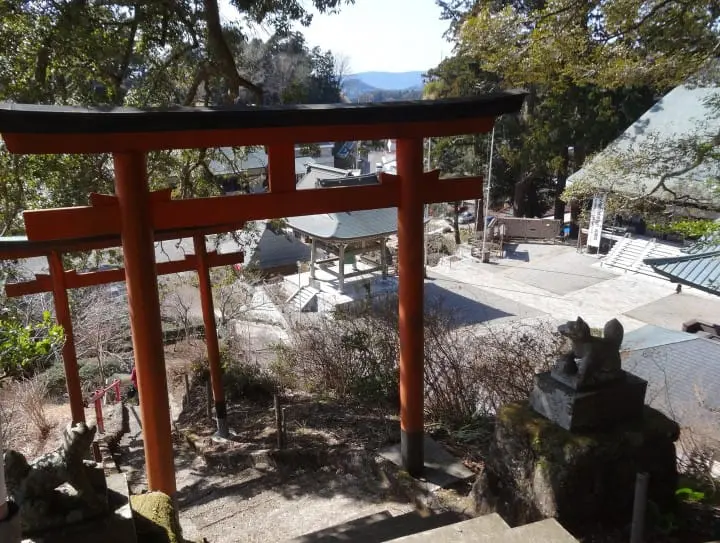
It was formally founded in 836 as a temple of the Buddhist sect Tendai, but records from 771 show that Mt. Kiyosumi was already a site for religious worship. Between the Muromachi period (1333-1573) and the Edo period (1603-1868) the temple’s main buildings were repeatedly destroyed or suffered damage from fires or conflicts.
However, the several structures that remain have been designated either national or prefectural historic and cultural properties. In addition, certain areas have been selected as Places of Scenic Beauty or a National Natural Monuments.
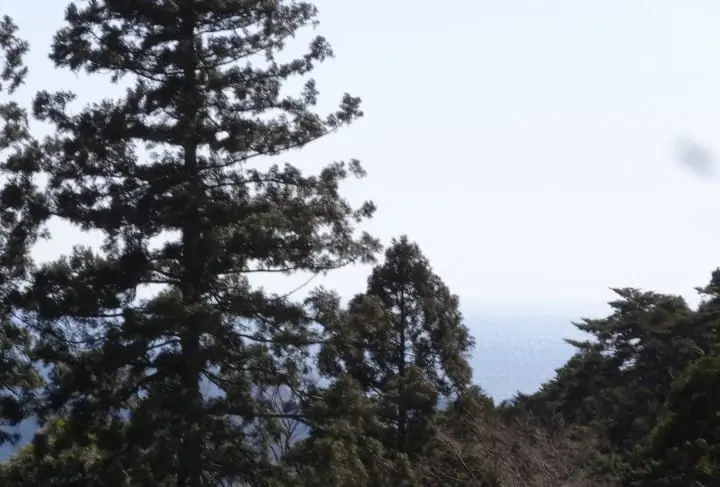
View of Pacific Ocean from Seichoji
As a result of the many fires that occurred at Seichoji, Hidari Jingoro, the artisan famous for carving the ”nemuri-neko” or sleeping cat at Nikko Toshogu, carved Seichoji “Hibuse no ushi” or literally, “the cow that prevents fires.” Since then there have been no fires at Seichoji. One can purchase a "Hibuse no ushi" omamori (amulet) as a form of protection against a fire in one's home.
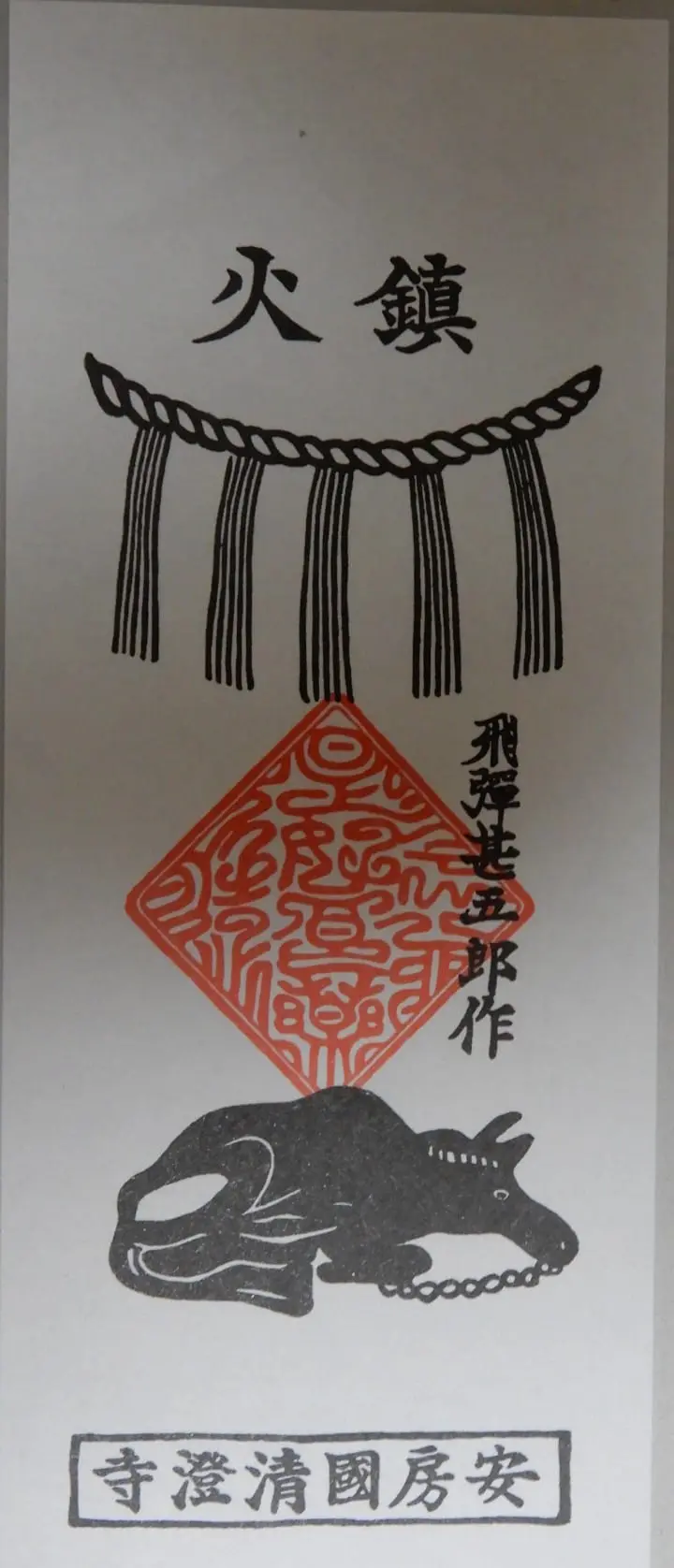
Hibuse no Ushi Amulet
One can purchase a "Hibuse no ushi" omamori (amulet) as a form of protection against a fire in one's home.
The Gates of Seichoji Temple
Two of the oldest and most prized structures of Seichoji are the Nakamon ("central gate") built in 1647 and the Nio Gate built in 1863.
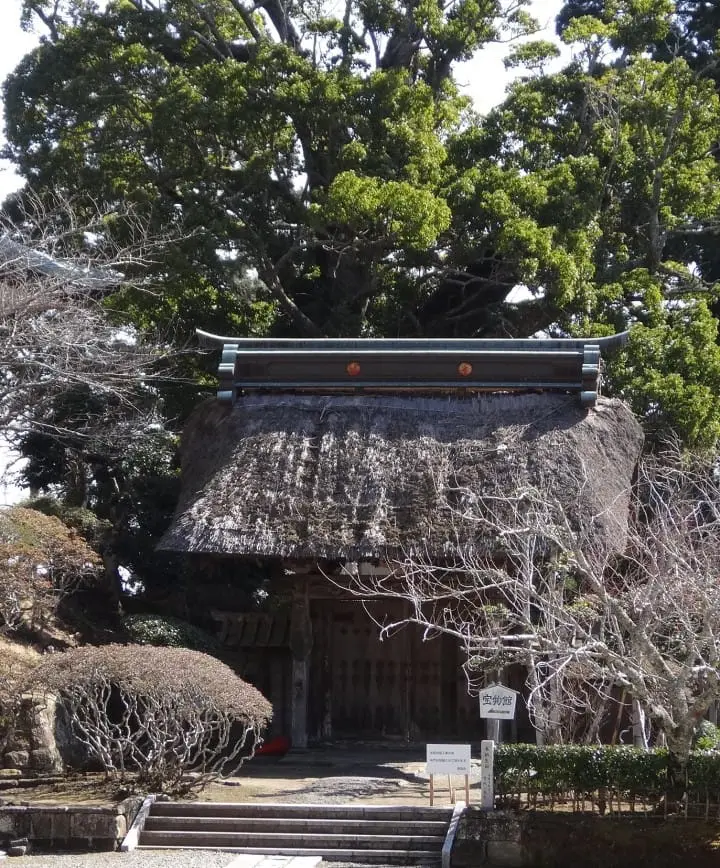
Nakamon Gate
While Nakamon itself is not large, its charm lies in its thatched roof and simple design.
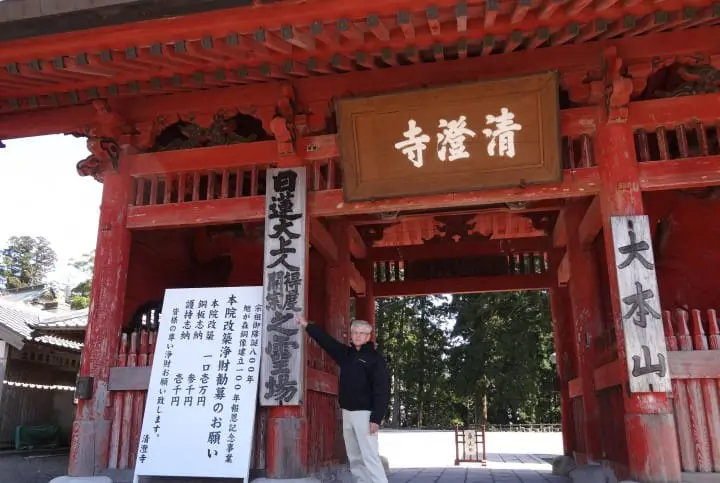
Nio Gate
The Nio Gate serves as the main entrance to the temple. On both sides there are frightening wooden guardian sculptures that represent birth and death. The sculpture on the right is called “Agyo” and its mouth is in the shape needed to form the "ah" sound. This figure is commonly called the “A” guardian. The sculpture on the left is “Ungyo” and his mouth is depicted as forming the sound "Un". For this reason, he is commonly called the “Un” guardian. The combined sounds form the sound “Aum”, which is a sacred symbol for the birth and death of all things.
Places Worth Seeing Around Seichoji
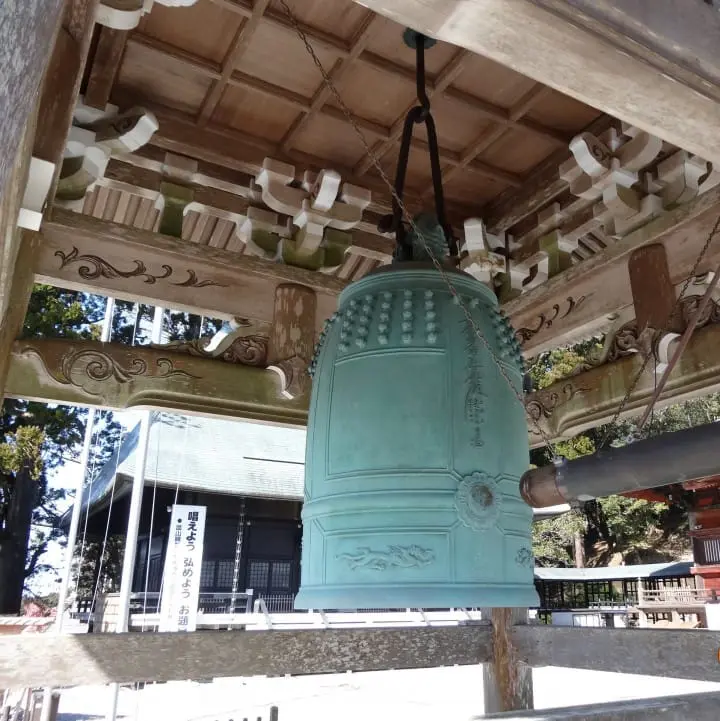
Within the temple precincts are numerous sculptures such as the treasure pagoda (1407), the temple bell (1392), the stone flag pagoda (1424) and the 1,200-year old Hoshi-no-Ido ("Star Well"). Currently, a new main hall is under construction.
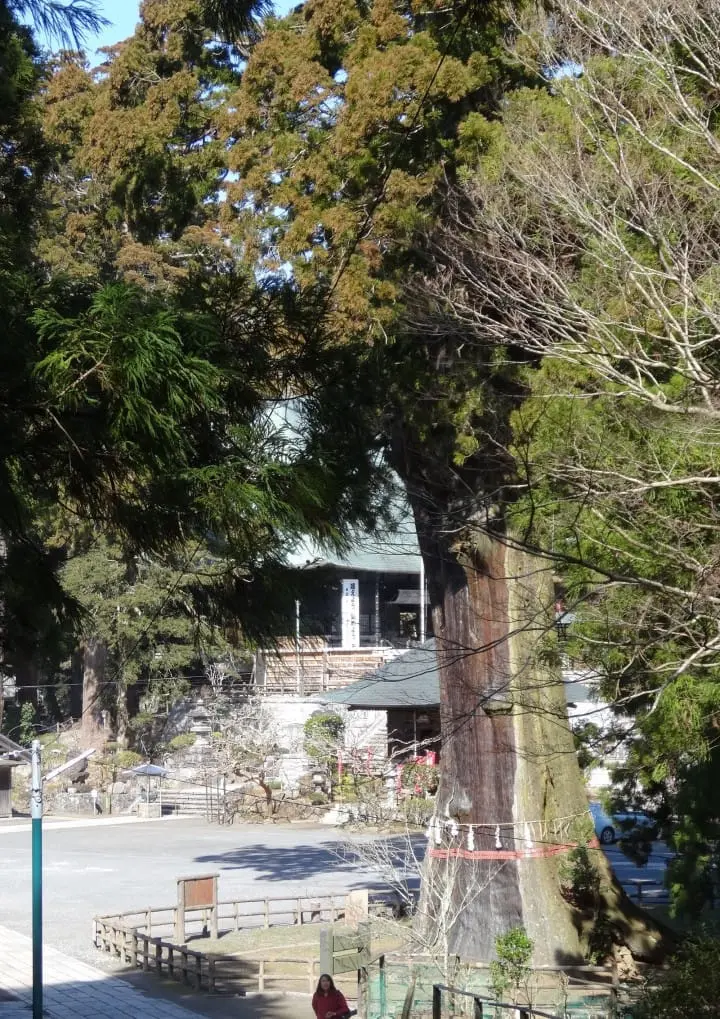
Seichoji’s well-known cedar tree is estimated to be over 1,000 year old and over 48 meters tall. It has been designated as a national natural monument.
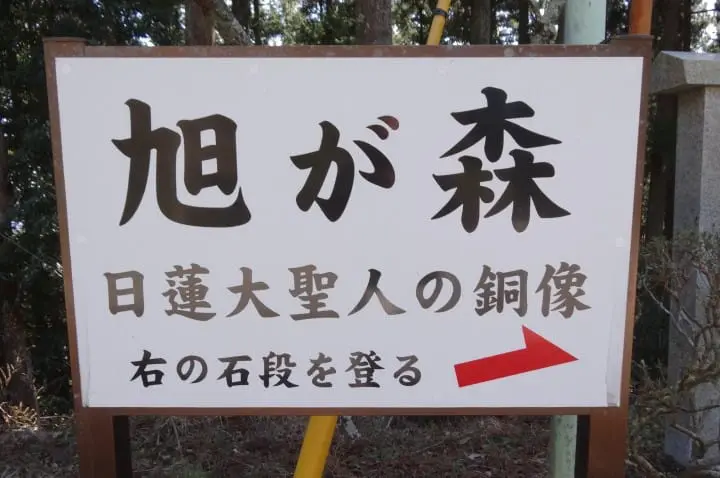
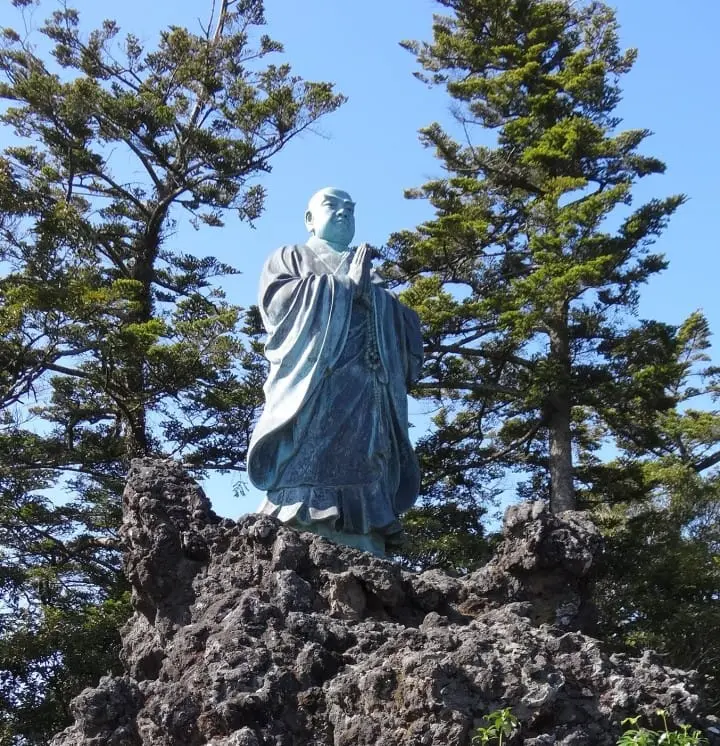
Statue of Nichiren looking out toward the Pacific Ocean
The neighboring Asahi Forest (Asahigamori) has also been selected as one the 100 best sites to view the sunrise. After enjoying a stroll around the grounds of Seichoji follow the path marked for Asahigamori and the stairs leading up to an overlook. At the top you will also find the bronze statue of Nichiren looking out towards the Pacific Ocean.
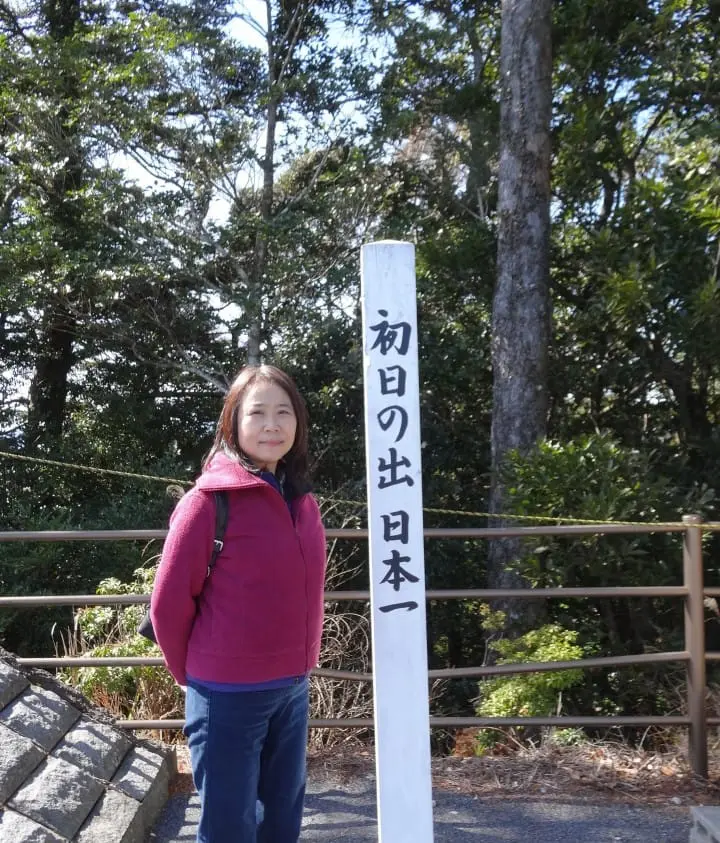
Sign stating that this is the spot where the sunrise is seen first in Japan
You’ll notice a sign stating that the sunrise is first visible from this spot and not Mt. Fuji. Supposedly this is due the elevation and location of Mt. Kiyosumi, the second highest mountain in Chiba Prefecture.
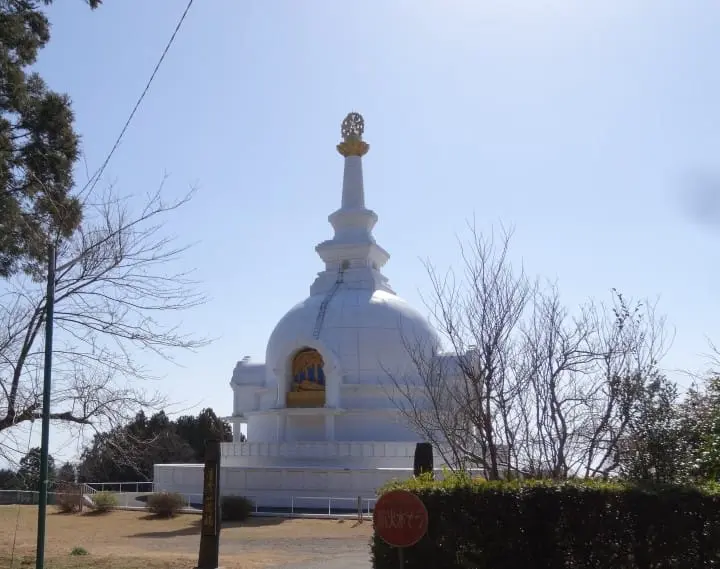
Descend the stairs and a short distance up the path you will encounter the striking Go-Bussharito. This is a Buddhist pagoda (stupa) that usually contains Busshari (remains of Shakyamuni-butsu or Buddha).
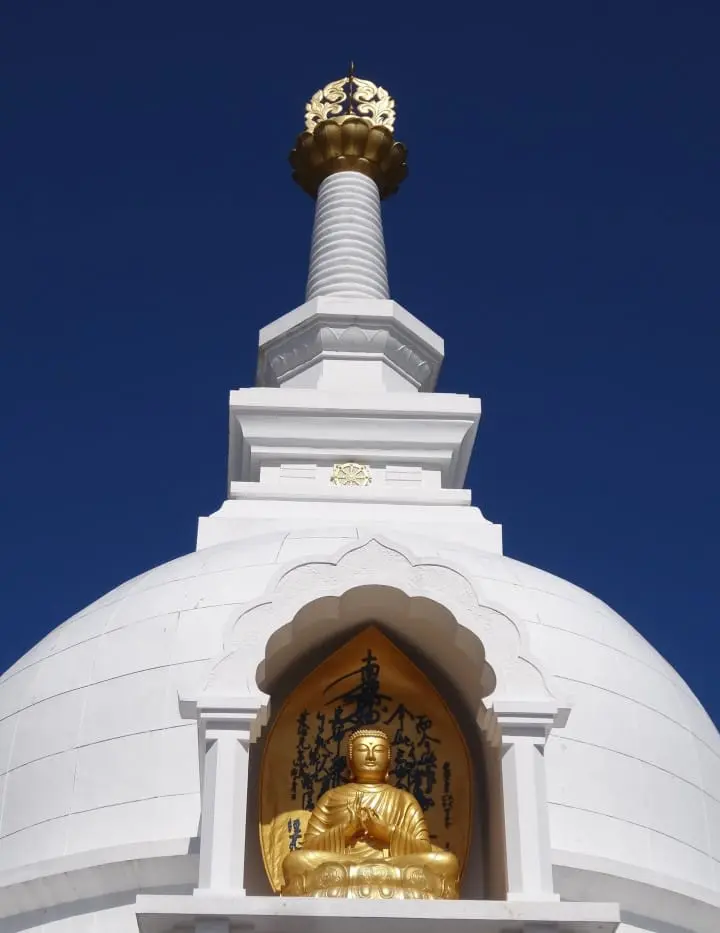
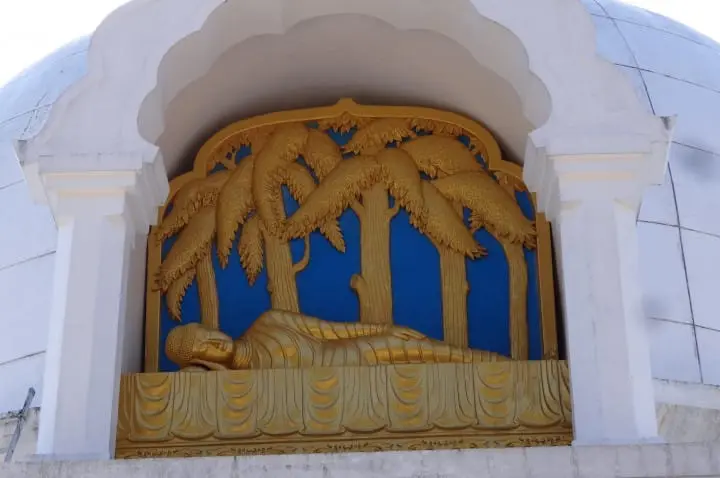
This is a "Peace Pagoda" built in 1969 and a monument to “inspire peace, designed to provide a focus for people of all races and creeds, and to help unite them in their search for world peace.” The stupa was built and funded by Nipponzan-Myōhōji-Daisanga, a new Japanese religious movement founded in 1917 based on Nichiren Buddhism.
Seichoji and the Holy Priest Nichiren
Seichoji has played a significant role in the development and spread of Buddhism both in Japan and worldwide. The founder of the Nichiren sect of Buddhism, Nichiren, studied and was ordained at Seichoji. He was born on February 16th 1222 in Kominato village (now part of Kamogawa city) as the son of a fisherman. Tanjoji Temple in Kominato commemorates his birth and praises his religious zeal to creating the Nichiren school of Buddhism.
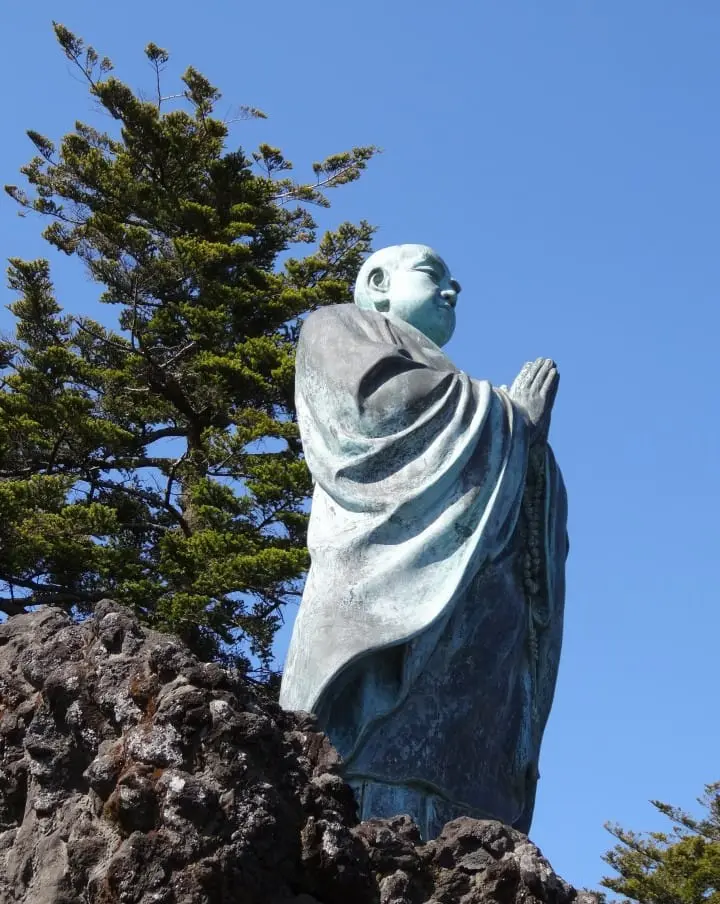
He left home at the age of 12 to study at Seichoji Temple near Kominato. In those days, temples were the only place where common people could learn reading and writing along with Buddhism. Ordained at the age 16, Nichiren later traveled to Kamakura to further his studies of other Buddhist sects.
Eventually, in 1253, after changing his name to Nichiren (with "nichi" meaning "sun" and "ren" meaning "lotus"), he founded at Seichoji the Nichiren sect of Buddhism. The Nichiren sect is based on the belief in the Lotus Sutra and that chanting “Nam-myo-ho-renge-kyo” would ensure one’s path to salvation. This chant was first intoned by Nichiren at Seichoji on April 28th 1253 and is roughly translated as "Devotion to the Mystic Law of the Lotus Sutra" or "Glory to the Sutra of the Lotus of the Supreme Law".
Seichoji originally belonged to the Tendai sect; however, in 1618 by order of the Tokugawa Shogunate it was converted to the Shingon sect. In 1949, Seichoji was converted to a Nichiren sect.
Since his teachings were in conflict with the Buddhist school supported by the Kamakura government, Nichiren was exiled several times and from 1272-1274 he was exiled to Sado Island (Niigata Prefecture). He passed away in 1282 leaving behind a very popular Buddhist sect that continues to grow to this day.
Tanjoji - The Birth Temple of Holy Priest Nichiren
Originally founded by Nichiren in 1276, the current temple built in the early 1700’s is located in the small village of Kominato near the birthplace of Nichiren, the founder of the Nichiren Buddhist sect. "Tanjo" means birth and "ji" temple. This temple is located 10 kilometers from Seichoji.
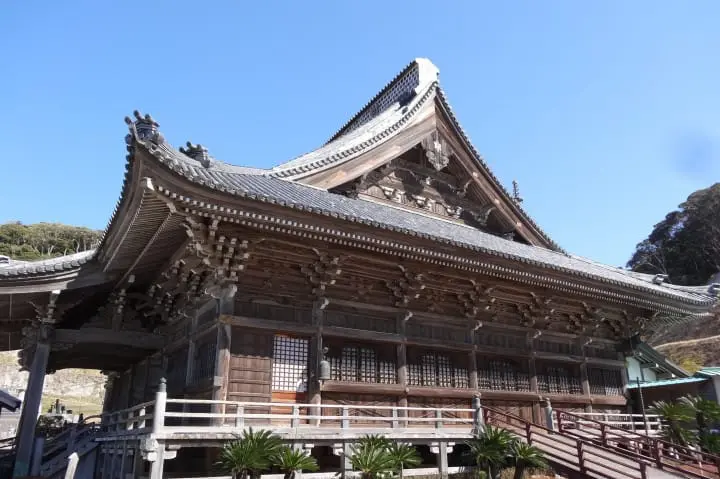
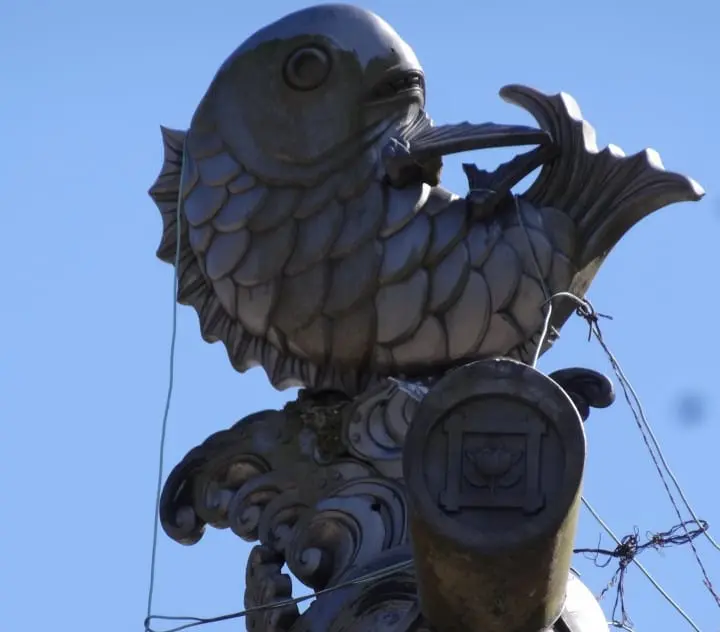
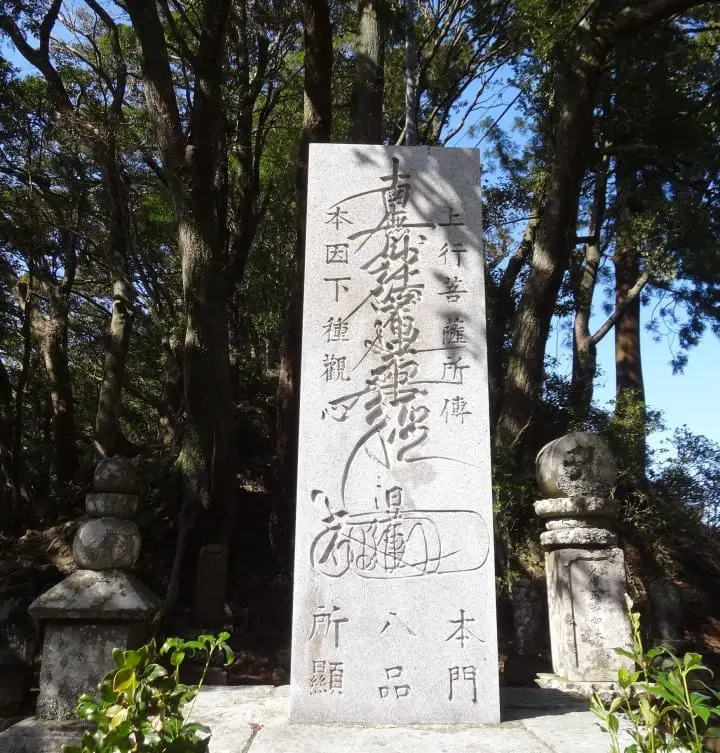
Stone monument inscribed with the “Nam-myo-ho-renge-kyo” chant
Tanjoji is a lovely, peaceful temple with a beautiful view of the Pacific Ocean to the south and a traditional Japanese garden that runs up to hills to the north. Its Nio-mon entrance gate is the largest in Chiba Prefecture. Magnificent white stone lanterns line the path to the main hall.
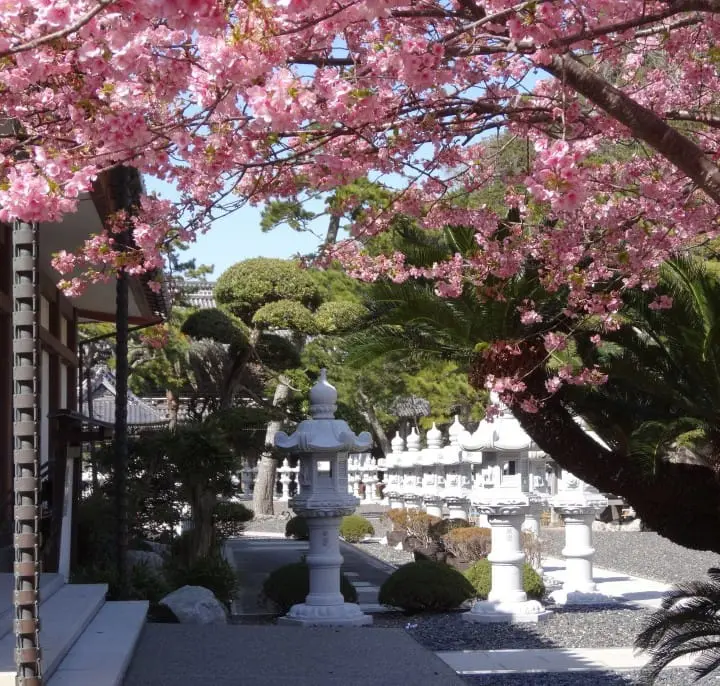
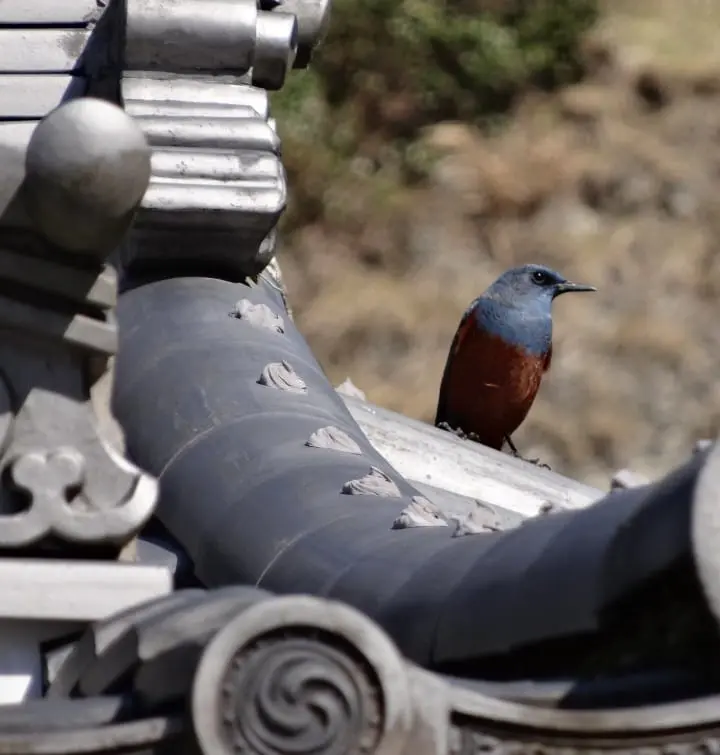
A blue rock-thrush enjoying the view from atop Soshi Hall
One of the best times to visit is mid-February when the many temple plum trees are blossoming. Seichoji and Tanjoji are two of the four sacred places of the Nichiren sect; the other two are Kuonji Temple in Yamanashi Prefecture and Ikegami Honmonji Temple in Tokyo.
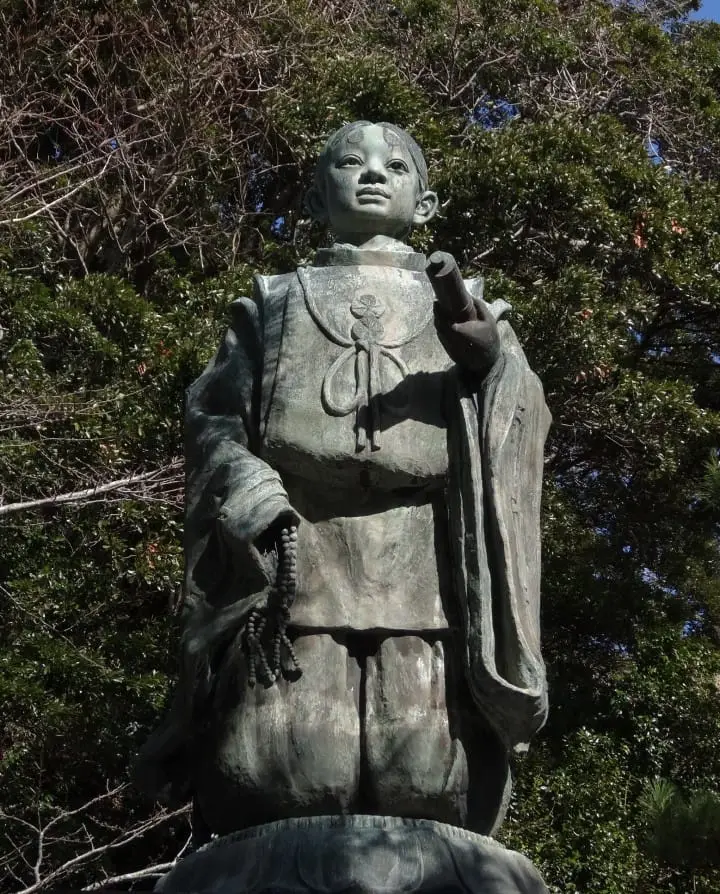
Statue of Zennichimaro
Within the temple grounds is a stone statue of Zennichimaro (the childhood name of Nichiren) at the age of 12. There is also a Treasure House called "Homotsukan" (admission fee charged) that displays and preserves writings and objects that belonged to Nichiren.
When visiting the Kamogawa area in Chiba Prefecture do stop by these two wonderful temples related to one of the most important figures in the history of Japanese Buddhism!
Click Below for Seichoji Temple details:
Click Below for Tanjoji Temple details:
• Access to Seichoji:
JR Train:
From the JR Sotobo-line Awa-Amatsu Station it’s 15 minutes by Kamogawa-Nitto bus. Take the bus bound for either "Seichoji (Kiyosumidera)" or "Oku-Kiyosumi via Seichoji". Get off at the Seichoji bus stop. It’s also a 10-minute taxi ride.
From JR Sotobo-line Awa-Kominato Station it’s 20 minutes by taxi.
Expressway Bus Service:
The Kamogawa Nitto Bus Company runs expressway buses from the Tokyo Station directly to Awa-Kamogawa JR Station. Buses depart from the Yaesu exit of Tokyo Station. Buses depart almost hourly and the trip takes roughly 2 and a half hours. It’s a 20-minute taxi ride from Awa-Kamogawa Station to Seichoji.
• Access to Tanjoji:
From JR Awa-Kominato Station it’s a 20-minute walk or 5-minute taxi ride. The Kamogawa-Nitto Bus operates hourly. Take the bus bound for "Namegawa Island" or for "Kazusa-okitsu station" and get off the bus in about 3 minutes at "Tanjoji Iriguchi" bus stop.
You May Also Like:
Want To Adopt An 800 Year Old Rice Paddy? The Charm Of Oyama Senmaida
Kameda Shuzo: A 260-Year Old Brewery Producing Sacred Sake (Part 1)
Kameda Shuzo - A Sake Brewery Diversifying For The Future (Part 2)
Kita Onsen In Tochigi (1): Travel Back In Time To A Secluded Onsen Inn
Climbing Japan’s Famous 100 Mountains - Mount Adatara, Fukushima












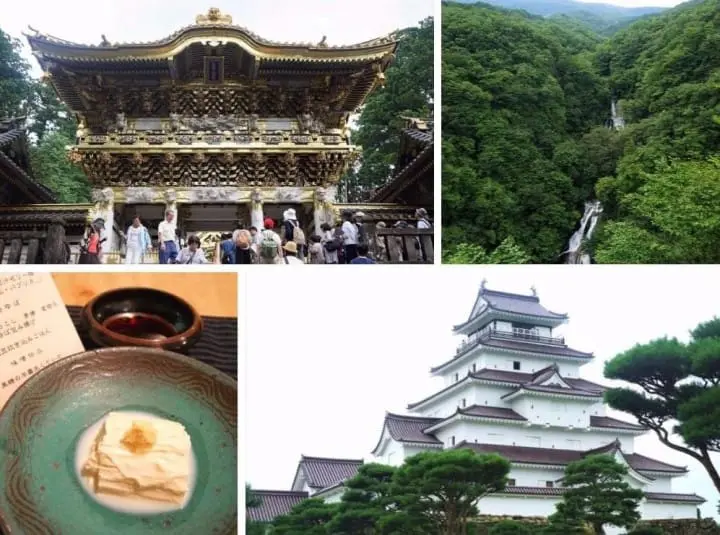


























![[Coupon Available] Attention Overseas Winter Sports Fans! Nagano's Sports Depot Has Evolved](https://resources.matcha-jp.com/resize/720x2000/2026/01/05-254819.webp)
![[2 hours from Tokyo ] 10 Quiet and Breathtaking Views of Mount Fuji in Yamanashi Hokuto City , Yamanashi - Part 2](https://resources.matcha-jp.com/resize/720x2000/2025/12/16-253037.webp)

![[Reopening in March 2026] Ikoma Sanjo Amusement Park Park, 45 minutes from Osaka , with free admission](https://resources.matcha-jp.com/resize/720x2000/2024/08/28-194409.webp)
![[Gunma] 5 recommended gourmet foods at Kawaba Denen Plaza Roadside Station!](https://resources.matcha-jp.com/resize/720x2000/2025/02/26-225970.webp)